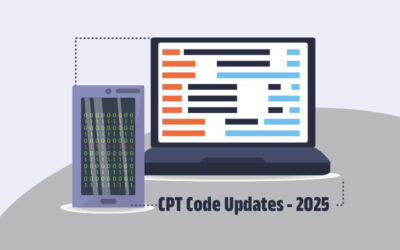The coding and billing considerations for an obstetric anesthesia procedure differ from the surgical anesthesia procedure. So, navigating the nuances of obstetric anesthesia requires precise identification and reporting of the latest CPT codes relevant to the service provided. An anesthesiology medical coding company can streamline the coding process for providers and ensure a robust billing process to optimize revenue.
Anesthesiology medical coding for obstetrical procedures involves the base units, time units and modifying units. Let’s see how to report this service using CPT codes.
When the neuraxial labor analgesia/anesthesia is administered by an anesthesiologist or CRNA, the anesthesia code 01967 should be reported along with an appropriate modifier from the following list.
Modifiers Used by Anesthesiologists
- AA: Anesthesia services performed personally by anesthesiologist
- AD: Medical supervision by a physician (anesthesiologist); more than four concurrent anesthesia procedures
- QK: Medical direction (supervision) of two, three or four concurrent anesthesia procedures
- QY: Anesthesiologist medically directs one CRNA
Modifiers Used By CRNAs
- QX: CRNA service with medical direction (supervision) by a physician
- QZ: CRNA service without medical direction (supervision) by a physician
- QS: Monitored anesthesiology care services (can be billed by a qualified non-physician anesthetist or a physician)
Anesthesia time should also be reported along with this code, and the time units are calculated in 15-minute increments, with each increment equaling one time unit.
CPT Codes Used to Report Neuraxial Labor Analgesia/Anesthesia
The CPT codes currently used by obstetric anesthesiologists to report neuraxial analgesia/anesthesia services are:
CPT code 01967 – Neuraxial labor analgesia/anesthesia for planned vaginal delivery (this includes any repeat subarachnoid needle placement and drug injection and/or any necessary replacement of an epidural catheter during labor)
Use code 01996 for daily management of epidural or sub-arachnoid drug administration; anesthesia time and modifiers are not required for this code. This code is limited to one unit of service per postoperative day. It is not separately payable on the date of surgery but may be reported only on dates of service following surgery, and only in the hospital inpatient setting.
Billing Guidelines for CPT Code 01967 are:
- All claims of 19 or less units do not require detailed anesthesia report on the claim form
- All claims of 20 or more units require an anesthesia report to be attached on the claim form
The Time Requirements for CPT code 01967 are:
The Relative Value Guide (RVG), published by the American Society of Anesthesiologists (ASA) states that:
“Unlike operative anesthesia services, there is no single, widely accepted method of accounting for time for neuraxial labor anesthesia services. Professional charges and payment policies should reasonably reflect the costs of providing labor anesthesia services as well as the intensity and time involved in performing and monitoring any neuraxial labor anesthesia service.”
The RVG recommends four methods that can be adopted by practices to capture the time spent in performing and monitoring any neuraxial procedures:
- Base units plus insertion-to-delivery time units reported in minutes (subject to a reasonable cap). Delivery can include related services such as delivery of placenta or episiotomy/laceration repair.
- Base unit, plus one unit per hour (time unit as defined by local standards and time reported in minutes) for neuraxial anesthesia service management plus direct contact time (insertion, management of adverse events, delivery, removal).
- Incremental time-based flat fees such as 0<2 hrs, 2-6 hrs, >6hrs.
- Single fee
A thorough documentation process to record the entire clinical information is crucial for prompt claim coverage. From the list of options mentioned above, practices must choose a billing methodology that accurately reflects the time of labor anesthesia procedure rendered to the patient. The specific payer requirements for the reimbursement of the services vary according to the direct patient contact time. While some payers may require actual face time with the patient over the duration of the labor, others may not. So, the billing method selected by your practice must adhere to the rules and regulations of the respective health insurance company. Hiring a reliable medical billing services company can help you decide the billing method most suitable for your practice.
Add-on codes
For obstetric anesthesia care, there are two add-on codes that are to be reported in conjunction with the CPT code 01967–
- 01968 – Anesthesia for cesarean delivery following neuraxial labor analgesia/anesthesia
- 01969 – Anesthesia for cesarean hysterectomy following neuraxial labor analgesia/anesthesia
The time requirements for 01968 are determined according to the standard anesthesia procedure.
Here are the CPT codes that can be used to report neuraxial labor analgesia/anesthesia, along with the code description and base units:
| Code | Description | Base units |
|---|---|---|
| 01967 | Neuraxial anesthesia services for a patient undergoing a planned vaginal delivery (this includes any repeat sub-arachnoid needle placement and drug injection and/or any necessary replacement of an epidural catheter during labor) | 5 |
| +01968 | Anesthesia for cesarean delivery following neuraxial labor analgesia/anesthesia | 3 |
| +01969 | Anesthesia for cesarean hysterectomy following neuraxial labor analgesia/anesthesia | 5 |
| 01996 | Daily management of epidural, not to include the day that the catheter is placed | N/A |
| 62320 | Injection(s), of diagnostic or therapeutic substance(s) (e.g. anesthetic, antispasmodic, opioid, steroid, other solution), not including neurolytic substances, including needle or catheter placement, interlaminar epidural or subarachnoid, cervical or thoracic; without imaging guidance | |
| 62321 | With imaging guidance | |
| 62322 | Injection(s), of diagnostic or therapeutic substance(s) (e.g. anesthetic, antispasmodic, opioid, steroid, other solution), not including neurolytic substances, including needle or catheter placement, interlaminar epidural or subarachnoid, lumbar or sacral (caudal); without imaging guidance | |
| 62323 | With imaging guidance | |
| 62324 | Injection, including indwelling catheter placement, continuous infusion or intermittent bolus, of diagnostic or therapeutic substance(s) (e.g. anesthetic, antispasmodic, opioid, steroid, other solution), not including neurolytic substances, interlaminar epidural or subarachnoid, cervical or thoracic, Without Imaging Guidance | |
| 62325 | With Imaging Guidance | |
| 62326 | Injection, including indwelling catheter placement, continuous infusion or intermittent bolus, of diagnostic or therapeutic substance(s) (e.g. anesthetic, antispasmodic, opioid, steroid, other solution), not including neurolytic substances, interlaminar epidural or subarachnoid, lumbar or sacral (caudal), without imaging guidance | |
| 62327 | With Imaging Guidance |
Sometimes, the neuraxial labor analgesia/anesthesia is provided by one practitioner and the administration of anesthesia during cesarean delivery or cesarean hysterectomy is by another practitioner. In such cases, the correct code should be reported along with the appropriate modifier. The anesthesiologists can receive reimbursement for medical direction.
Suppose the neuraxial labor analgesia/anesthesia is personally performed by the anesthesiologist and the anesthesia for the cesarean delivery is provided by a CRNA while the anesthesiologist supervises (medically directs two CRNAs). The CRNA is employed by the practice same as that of the anesthesiologist. The following should be the codes:
- 01967-AA
- 01968-QK
- 01968-QX
When the CRNA is not employed by the same practice as the anesthesiologist, the coding will be different. Take the case of neuraxial labor analgesia/anesthesia being personally performed by the anesthesiologist, and the anesthesia for cesarean delivery is provided by the CRNA while the anesthesiologist supervises (medically directs one CRNA). The coding would be:
- 01967-AA
- 01968-QY
In this case, the CRNA would file a separate claim, reporting the anesthesia administered for cesarean delivery only. Some insurers allow the CRNA in a case such as the above to report the “add-on” code 01968-QX as a standalone code on a separate claim without the code 01967. This policy change is applicable also to the “add-on” code 01969, which can be reported as a standalone code on a separate claim if applicable.
CRNAs cannot use the code 01961-QX to report the administration of anesthesia during the cesarean delivery in the above-mentioned instance.
In a case where the neuraxial labor analgesia/anesthesia is performed by a CRNA and the anesthesia for the cesarean delivery is performed by the supervising anesthesiologist (the CRNA is employed by the same practice as the anesthesiologist), medical direction is for one CRNA and the coding is as follows:
- 01967-QX
- 01967-QY
- 01968-AA
Obstetric anesthesiologists, medical billers, and coders must stay updated with the latest CPT codes and individual payer policies for compliance with regulations. A complete and accurate documentation process, along with knowledge of relevant coding guidelines, is essential for proper claim coverage. Partnering with a professional medical billing company having expertise in anesthesiology medical billing ensures maximum reimbursement for your practice.
Simplify the anesthesia billing process by hiring our skilled medical billing professionals!
Boost the bottom line of your practice!




